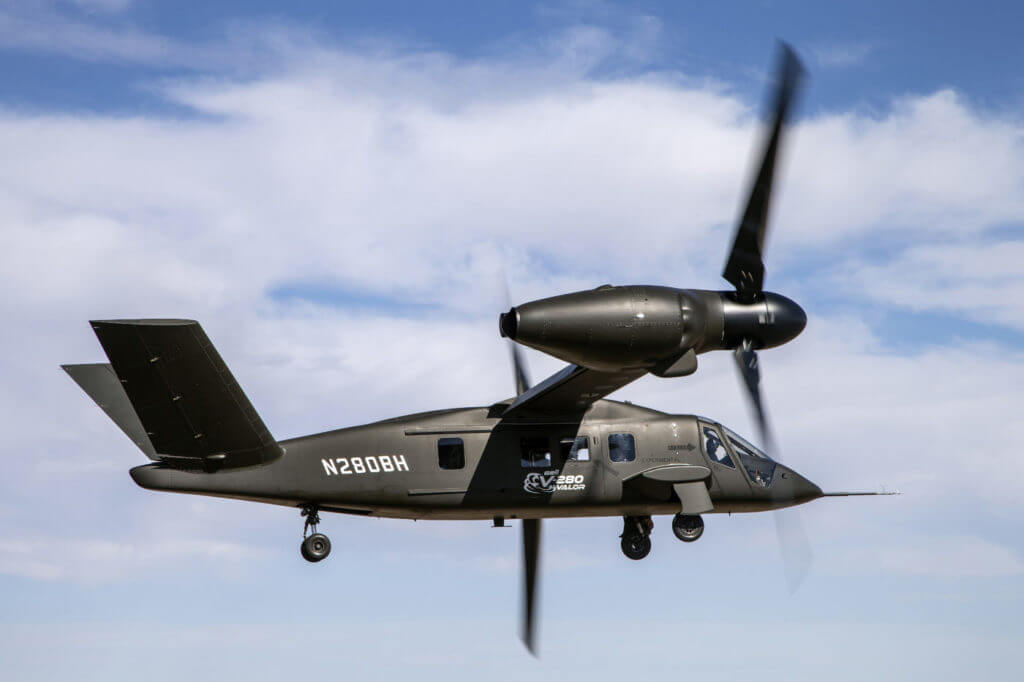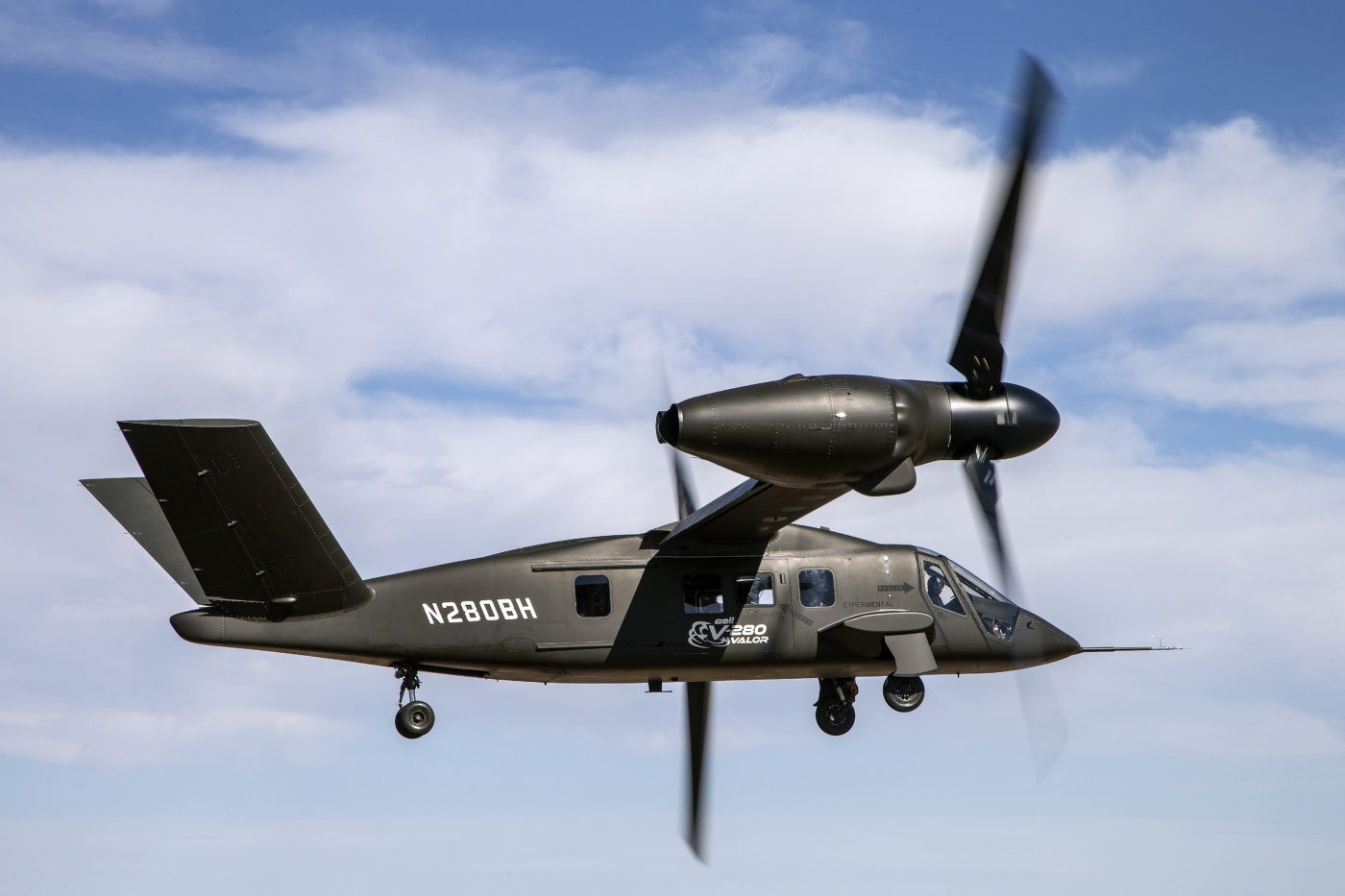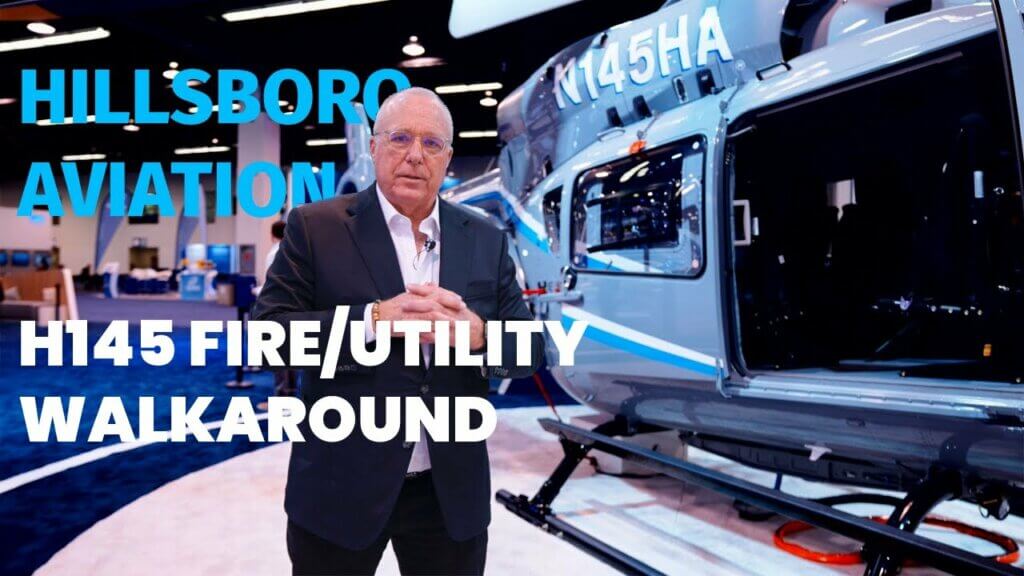Bell plans to hand over control of the V-280 Valor advanced tiltrotor to a robotic flight control system that will fly without pilot input within the next three months.
The company recently received an extension to its Joint Multi-Role Technology Demonstration (JMR-TD) program that will carry it through the end of the year, or about 25 more flight hours, and allow for demonstrating both sling loads and autonomous flight, according to Jeff Schloesser, Bell’s executive vice president for strategic pursuits.

“What this extension did was allow us to really bridge from this program — Joint Multi-Role Technology Demonstration — into the program that will start the development . . . of the Future Long Range Assault Aircraft [FLRAA] program of record,” Schlosser told Vertical on Oct. 1 at the company’s Advanced Vertical Flight Center outside Washington, D.C. “What it allows us to do is to do a few tasks that we have not done underneath the previous contract, which was our desire and the Army’s desire to see us fly autonomously. We intend to do that around probably the December, January timeframe.”
When it does fly with the full fly-by-wire autonomous flight controls engaged, a test pilot will be in the cockpit to keep an eye on things. Bell does not yet have a test card written for the autonomous flight demonstration, but it will likely consist of simple maneuvers that showcase basic operational capability of the system, Schloesser said.
He said the flight test team will not “make it so complex; try to just ensure that you can, in fact, do the things that are required, which is . . . to get the aircraft basically started, taxi, take off, do some pedal work, [and] fly around in the airspace a little bit. [Then], bring it back into the pattern, enter the pattern and land, taxi, [and] shut down.”
The Valor now has a total of 132.6 fight test hours and at least 250 hours of ground run time. Bell is convinced it has proven the vehicle’s performance and that it can fulfill the Army’s requirements for a medium-lift assault aircraft to replace the UH-60 Black Hawk. The JMR-TD extension should cover about 25 more flight test hours, Schloesser said.
Based upon the wealth of flight test data, the company has submitted a whitepaper pitch, effectively its data-driven application to compete in the Army’s FLRAA program. Those white papers were due to the Army on Oct. 1, according to Terry Horner, Bell’s director of government relations.
Bell is preparing its manufacturing plant to produce two Army aircraft at once — it also is competing for the Future Attack Reconnaissance Aircraft (FARA) — while also pitching the V-280 to the U.S. Navy and Marine Corps under the recently launched Attack Utility Replacement Aircraft program, Horner said.
“They’re both moving forward,” Horner added. “So they both see that the cost is affordable, it is large-fleet affordable, that we can meet the requirements of the United States military, both of the services, and Bell can do it in a sustainable aircraft.”
The white papers, using data gathered during JMR-TD were based on the Army’s draft FLRAA requirements. The Army is expected to choose two “project agreement holders” based on the extended whitepapers before the end of March 2020, Horner said. Those two teams will continue to refine the service’s desired FLRAA performance characteristics.
“What we’ll do is we’ll compete in that space to help refine the requirements. While we’re doing that we’re going to continue to work on our design, in order to be ready to go into production or to be the 2030 timeline.”
A downselect for one aircraft design to enter engineering and manufacturing development (EMD) is expected in 2023. The first unit equipped should have its FLRAA aircraft in 2030, according to the Army’s prescribed timeline.
Schloesser said Bell is confident in its design for both the V-280 and the newly unveiled 360 Invictus FARA offering. With a wealth of flight test under its belt, Bell is nearly ready to park the V-280, which is costly to fly. Both Bell and Textron executives have publicly warned that the program would be effectively mothballed without ongoing funding from the Army to continue refining LRAA offerings. Bell has invested more than $500 million dollars of internal research and development funding in the program.
“We feel very comfortable with the basic aircraft and the aerodynamics data that we’ve been able to pull out of the flight test,” Schloesser said.
By extending Bell’s V-280 testing for another three months, the Army provided “an elegant bridge into the next phase, which is actually the program,” Schloesser said.









